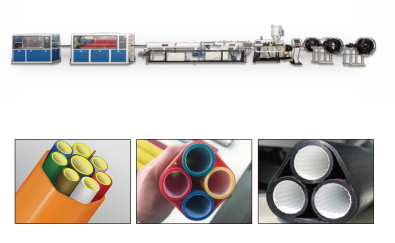
Silicon Coating Pipe Extrusion Line
The raw material of the silicon core tube substrate is high-density polyethylene, the inner layer used a lowest friction coefficient silica gel solid lubricant. It is corrosion resistance, smooth inner wall, convenient gas blowing cable transmission, and low construction cost. According to the needs, different sizes and colors of small tubes are concentrated by external casing. The products are applied to optical cable communication network system for freeway, railway and so on.
Products Details

Featured Products
-
Experienced Factory for PC/PMMA Optical Sheet Extrusion Line - High-Quality Output Guaranteed!
-
PP/PE Solar Photovoltaic Cell Backsheet Extrusion Line
-
We are the Leading Manufacturer of PVB/SGP Glass Interlayer Film Extrusion Line - High-Quality & Affordable Solutions!
-
PET Decorative Film Extrusion Line
-
Large Diameter HDPE Pipe Extrusion Line
-
PP/PE/ABS/PVC Thick Board Extrusion Line
-
HDPE Heat Insulation Pipe Extrusion Line
-
PE Marine Pedal Extrusion Line
-
Parallel/Conical Twin Screw HDPE/PP/PVC DWC Pipe Extrusion Line
-
TPU Glass Interlayer Film Extrusion Line
Contact us
Please feel free to give your inquiry in the form below We will reply you in 24 hours